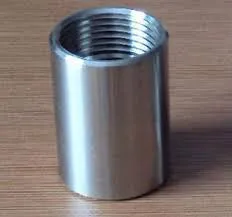-
Cangzhou Yulong Steel Co., Ltd.
-
Phone:
+86 13303177267 -
Email:
admin@ylsteelfittings.com
- English
- Arabic
- Italian
- Spanish
- Portuguese
- German
- kazakh
- Persian
- Greek
- French
- Russian
- Polish
- Thai
- Indonesian
- Vietnamese
- Zulu
- Korean
- Uzbek
- Hindi
- Serbian
- Malay
- Ukrainian
- Gujarati
- Haitian Creole
- hausa
- hawaiian
- Hebrew
- Miao
- Hungarian
- Icelandic
- igbo
- irish
- Japanese
- Javanese
- Kannada
- Khmer
- Rwandese
- Afrikaans
- Albanian
- Amharic
- Armenian
- Azerbaijani
- Basque
- Belarusian
- Bengali
- Bosnian
- Bulgarian
- Catalan
- Cebuano
- China
- China (Taiwan)
- Corsican
- Croatian
- Czech
- Danish
- Esperanto
- Estonian
- Finnish
- Frisian
- Galician
- Georgian
- Kurdish
- Kyrgyz
- Lao
- Latin
- Latvian
- Lithuanian
- Luxembourgish
- Macedonian
- Malgashi
- Malayalam
- Maltese
- Maori
- Marathi
- Mongolian
- Myanmar
- Nepali
- Norwegian
- Norwegian
- Occitan
- Pashto
- Dutch
- Punjabi
- Romanian
- Samoan
- Scottish Gaelic
- Sesotho
- Shona
- Sindhi
- Sinhala
- Slovak
- Slovenian
- Somali
- Sundanese
- Swahili
- Swedish
- Tagalog
- Tajik
- Tamil
- Tatar
- Telugu
- Turkish
- Turkmen
- Urdu
- Uighur
- Welsh
- Bantu
- Yiddish
- Yoruba

Dec . 03, 2024 16:54 Back to list
ASTM A106 Grade B Pipe Specifications and Applications Overview
Understanding ASTM A106 Grade B Material
In the realm of construction and engineering, selecting the right material for piping systems is crucial for the integrity and efficiency of industrial processes. One of the most commonly specified materials for high-temperature and high-pressure applications is ASTM A106 Grade B. This article delves into the characteristics, applications, and benefits of ASTM A106 Grade B material, demonstrating its significance in the industry.
What is ASTM A106 Grade B?
ASTM A106 is a standard specification developed by ASTM International, which outlines the requirements for seamless carbon steel pipes for high-temperature service. Grade B is one of the three grades specified in this standard, which also includes Grade A and Grade C. The grade distinctions primarily pertain to the chemical composition and mechanical properties of the material.
ASTM A106 Grade B is characterized by its excellent hardness and high strength, making it suitable for applications where high temperatures and pressures are encountered. The material properties include minimal yield strength of 35,000 psi and a tensile strength ranging from 60,000 to 80,000 psi, ensuring its ability to withstand demanding conditions.
Chemical Composition
The chemical composition of ASTM A106 Grade B is crucial for its performance and applications. The primary elements include
- Carbon (C) Maximum of 0.26% - Manganese (Mn) 0.60 – 0.90% - Phosphorus (P) Maximum of 0.04% - Sulfur (S) Maximum of 0.05% These elements contribute to the material’s strength and ductility. For example, higher carbon content improves strength but may affect weldability, a factor that must be carefully considered in engineering applications.
Applications of ASTM A106 Grade B
astm a106 gr b material

Due to its robust properties, ASTM A106 Grade B material is commonly used in a variety of applications. The primary uses include
1. Boiler Tubes It is widely utilized in manufacturing boiler tubes for electric power generating plants, oil refineries, and other industrial applications. 2. Petrochemical Industry The material is often used in the construction of pipelines in petrochemical and oil refinery settings due to its structural integrity in high-pressure scenarios. 3. Chemical Plant and Piping Systems Its resistance to high temperatures and pressures makes it ideal for use in chemical processing plants, ensuring safe transport of various chemicals. 4. Marine Applications The ability to withstand harsh environmental conditions and mechanical stresses make ASTM A106 Grade B suitable for marine applications, particularly in shipbuilding.
Advantages of ASTM A106 Grade B
There are several advantages to using ASTM A106 Grade B material in industrial applications
- High Temperature Resistance The material performs excellently in high-temperature environments, making it a reliable choice for heat exchangers and reactors. - Cost-Effective Solution Compared to other high-grade materials, ASTM A106 Grade B offers a cost-effective alternative without compromising on performance.
- Versatility Its applications span across various industries, including power generation, oil and gas, and chemical processing, showcasing its versatility.
- Weldability Although precautions are necessary due to carbon content, ASTM A106 Grade B can be welded, providing flexibility in design and installation.
Conclusion
ASTM A106 Grade B material stands out as a preferred choice for many industrial applications, especially those involving high temperatures and pressures. Its desirable mechanical properties, coupled with a robust chemical composition, make it suitable for a wide array of uses, from petroleum and chemical processing to construction and boiler manufacturing. By understanding the properties and applications of ASTM A106 Grade B, engineers and manufacturers can make informed decisions, ensuring the safety, efficiency, and cost-effectiveness of their projects. As industries continue to evolve, the demand for reliable and high-performance materials like ASTM A106 Grade B will only increase, highlighting its importance in modern engineering.
Latest news
-
ANSI 150P SS304 SO FLANGE
NewsFeb.14,2025
-
ASTM A333GR6 STEEL PIPE
NewsJan.20,2025
-
ANSI B16.5 WELDING NECK FLANGE
NewsJan.15,2026
-
ANSI B16.5 SLIP-ON FLANGE
NewsApr.19,2024
-
SABS 1123 FLANGE
NewsJan.15,2025
-
DIN86044 PLATE FLANGE
NewsApr.19,2024
-
DIN2527 BLIND FLANGE
NewsApr.12,2024
-
JIS B2311 Butt-Welding Fittings LR/SR 45°/90° /180°Seamless/Weld
NewsApr.23,2024











